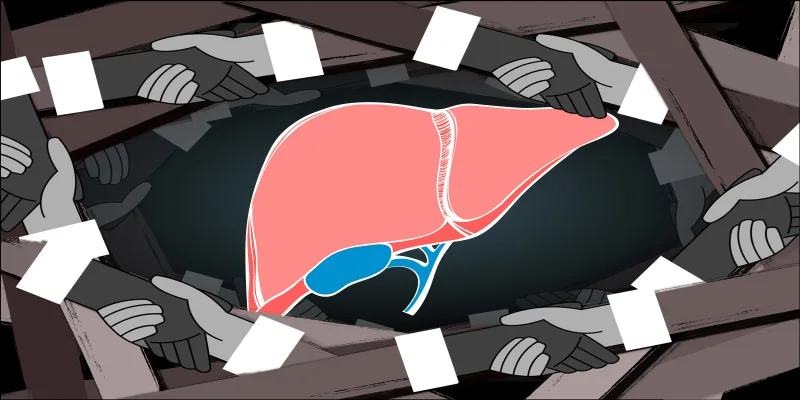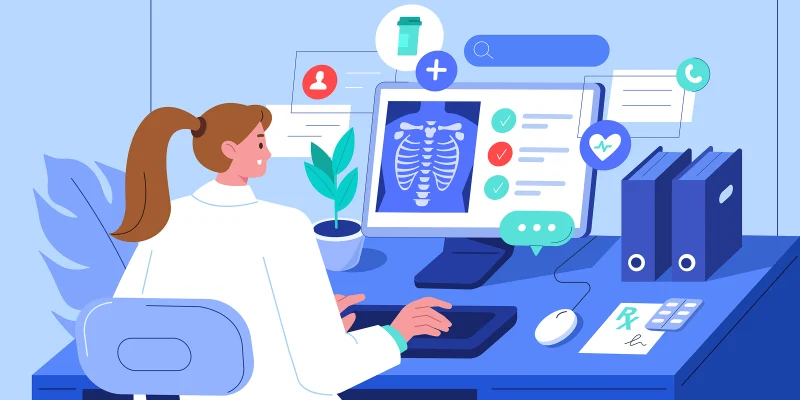Rebecca made her slow way, from the waiting room about 150 feet away, to my office. She had a cane and she took her time making each step. She seemed to be suffering and she did not appear to be trying to hide it. The small talk I usually have with patients on the way to my office, which lightens things up before we move on to the heavier stuff, was met with a disengaged reaction. We reached the office. We sat down in our chairs. Me, in my office chair, she, in one of the patient chairs, the one that was furthest from me.
I have a little “trust test” that I use with patients. I don’t tell them where to sit. If they sit in the chair that is furthest from me, I know I should be mindful about a potential issue with trust. In this, my first session with Rebecca, we did an intake; I gathered background information and made an initial treatment plan. I was surprised to find out she was 44 years old. If I’d had to guess, I’d have said she was in her 60s. She came to see me for depression, which she’d been diagnosed with eight years before. She’d tried some psychotherapy and multiple antidepressants. All in vain. She gave me the basic information I asked for: she was divorced, had a bachelor’s degree, no children, three sisters, a mother, and deceased father. She was living in her father’s house. She was unemployed and on disability.
“Your health?” I asked.
“You mean my diseases?” she said sarcastically.
Type 2 diabetes, asthma, high blood pressure, high cholesterol, chronic back pain and joint pain, which she told me had been diagnosed as fibromyalgia. The more pressing things she wanted to discuss were insomnia, anger, anxiety with agoraphobia, and an inability to enjoy anything.
“Suicide?” I inquired.
“I would if I wasn’t so scared of hell or my mother being so lonely.”
She marked “no” to abuse on her forms. I asked about it again, in more detail. Her father used to drink, he wasn’t around when she was a child, but returned to her life when she was 18 and he was finally sober. She did not remember either being physically abused or witnessing abuse.
We developed a strategy for medications; we’d try two more antidepressants she hadn’t tried yet.
“What about psychotherapy?” I asked.
She’d worked with one of our psychology interns in the past. “It was stupid,” she said. “We either sat there waiting for me to talk, or I would tell her about my week.”
I asked her if she would like to try psychotherapy with me, and I promised not to let her sit in silence for too long. She agreed. I explained the concept of behavioral activation, a behavioral therapy that helps with depression through an increase in activities that give meaning, satisfaction, and joy, to her. We set some basic goals and decided to meet weekly.
During our first year together, we changed her antidepressants five times and added an antipsychotic for augmentation. We tried different sleeping aides, but nothing was helpful. In psychotherapy, I realized I was moving too fast for her, so I started some motivational interviewing and introduced behavioral intervention more slowly. The sessions were sometimes excruciating for me. It felt like Rebecca’s depression was transferred to my shoulders; often, it felt almost offensive.
I decided to be more attentive. I got her a cushion and a foot rest for our sessions, so her physical pain would not be the focus of our talks. She was appreciative. I got to see a smile. But it never lasted long.
I reflected on the case. I knew some patients preferred to be angry or anxious than depressed. Depression was too scary for them. They felt like they might “fall apart” if they became sad. But Rebecca was already very sad; her body was falling apart, but depression was still better than feeling something else. What was the awful thing she couldn't allow herself to feel?
One morning I was going over my patient panel, making sure the people I needed to see were scheduled. I thought to myself that about 90% of my patients had experienced some severe form of abuse. Mostly sexual abuse. Maybe it was better for Rebecca to be depressed than constantly terrified and ashamed.
When Rebecca sat down in the furthest chair again, I told her about my little chair trust test.
I asked her if she felt comfortable with me, if she felt she was able to relax in my office. I acknowledged that she might feel disappointed with each new drug we tried that didn’t work. I told her I was sorry, and assured her that if I had a pill that I knew would make her feel good, I would have given it to her without delay.
“I know,” she said. “I don’t just trust anyone.” She told me that something had happened to her when she was 7 years old, when she’d spent the night at a cousin’s house. She told me that the people who were supposed to protect her had not believed her. It was not the first, second, or even the hundredth time I had heard someone talk about abuse, but it touched me deeply and I had tears in my eyes. We both used the tissue box.
At our next session, Rebecca sat closer. She told me about her nightmares and we did guided meditation and progressive muscle relaxation. Later, she made the connections between the location of the chronic pain in her body, and the places she was touched and held against her will. There was no cure, but there was relief, less suffering, and, finally, some trust.
The importance of traumatic childhood experiences to our health has been demonstrated in Adverse Childhood Experiences research. It shocked us then, in the 1980s, to discover how many people are exposed to horrific experiences as children, often at the hands of their own caretakers. The research emphasized how devastating it is, physically and emotionally, when the person that should love you, destroys you. Often, as a result, people who went through trauma live their life with the “spirit” of trauma woven into it. Some patients develop PTSD, some continue to love what destroys them, be it drugs, self-mutilation, abusive partners. Others fall into despair and become chronically depressed or anxious. Some seem to magically recover. When we treat these patients as psychiatrists, we often refer to them as having a “dual diagnosis,” meaning psychiatric illness and addiction — but I believe that the real diagnosis is severe childhood trauma. I find that trauma is so prevalent that I often assume it's there and that I just don’t know about it yet. When there are trust issues, somatic symptoms, prolonged periods of panic, outbursts of anger, vague psychotic symptoms, or depression that does not respond to any treatment, I inquire in a nonjudgmental and compassionate way about trauma. I have found that this is one of the rare cases wherein an assumption about a patient might actually help.
Have you ever made an assumption about a patient that proved beneficial to their care? Share your experience in the comments section.
Dr. Yehonatan Shilo is a psychiatrist with an international perspective on health care. He completed his education in Italy and has practiced medicine and psychiatry in Israel and the United States. He has special interests in underserved populations, health care policy and psychotherapy. He is a 2020–2021 Doximity Op-Med Fellow.
All names and identifying information have been modified to protect patient privacy.







